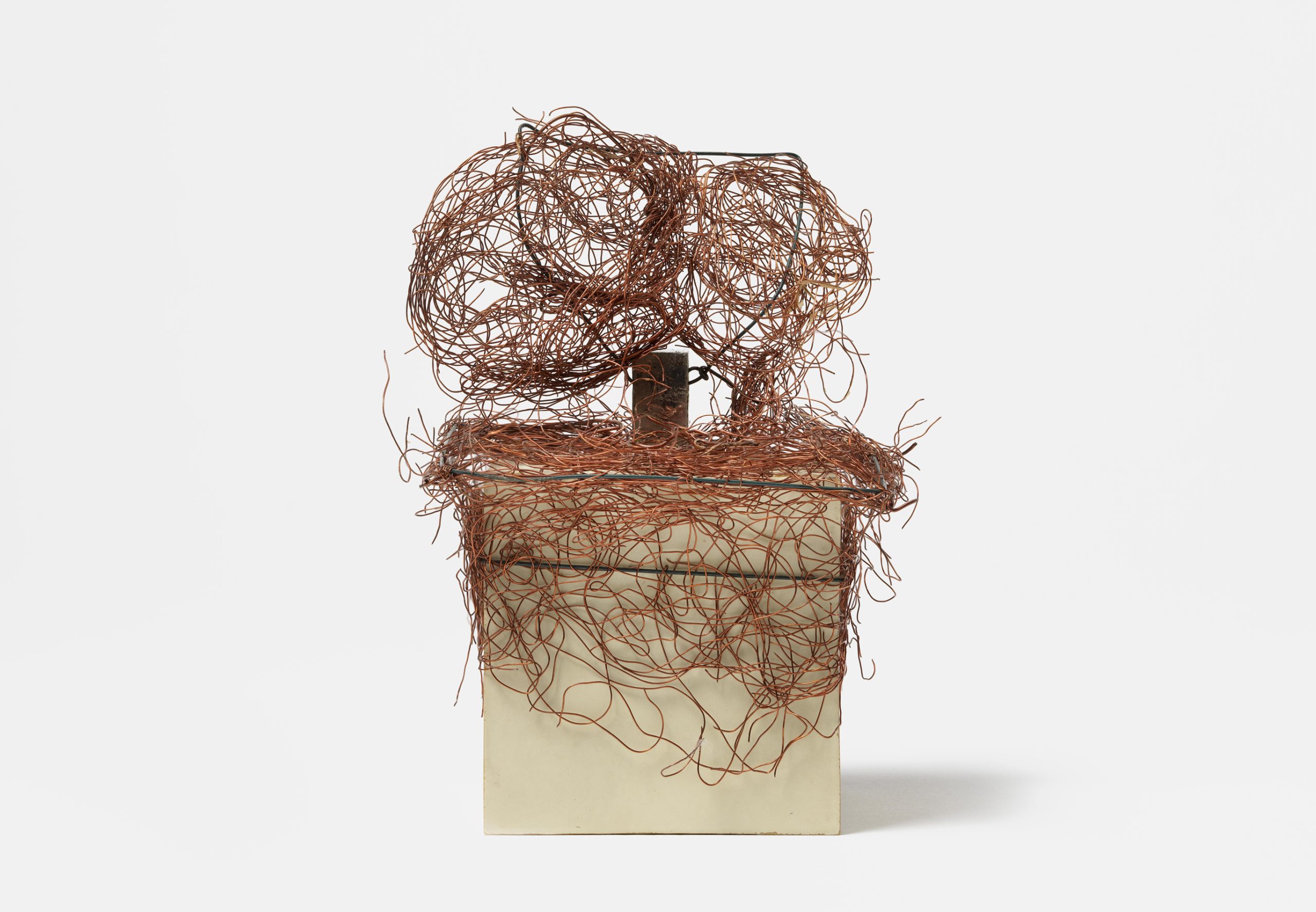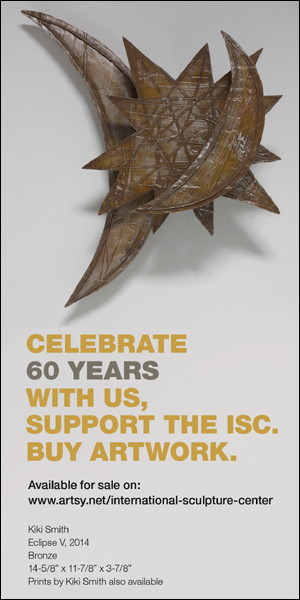Bilbao, Spain
In “Measuring Infinity” (on view through February 4, 2024), Gego’s sculptures and Frank Gehry’s architecture come together in striking alignment. This major retrospective brings approximately 150 works by the German-Venezuelan artist Gertrud Goldschmidt—known as Gego—center stage, their exquisite geometry and the shimmering, multilayered complexity of the museum combining into a mesmerizing experience. The works are arranged in groupings within a massive, airy gallery, which allows the entire exhibition to be seen from the center of the space. From this position, a kind of cascading geometry reigns supreme; the sculptures—which possess a buoyant, gravity-defying quality—are reminiscent of flowing water, falling rain, or billowing wisps of cumulus cloud in an open sky.
Gego, who died in 1994, was one of the most important abstract sculptors to emerge from Latin America during the second half of the 20th century. She initially trained as an architect and engineer in Stuttgart, before immigrating to Venezuela in 1939. This early grounding furthered her interest in the structural systems contained within architecture and design, and her subsequent work explores geometry, friction, and gravity via systems that seek to understand space through a purely abstract language. “Measuring Infinity,” which is organized chronologically and thematically, examines Gego’s entire oeuvre, placing her work within wider global developments in geometric abstraction and kinetic art. Her sculptures are complemented by drawings, engravings, and archival material to provide comprehensive insight into her practice.
Among the early works are sculptures that resulted from Gego’s investigations into the spatial and structural possibilities of parallel lines, including 12 Concentric Circles (1957), Eight Squares (1961), and Four Red Planes (1967). In these welded iron and aluminum pieces, parallel tubular elements create intersecting or superimposed planes. The use of parallel lines serves to generate an optical illusion, the works seemingly mutating on circumnavigation, as if in perpetual, flickering motion. In these sculptures, Gego acknowledged the principles of Venezuelan geometric abstraction, which was characterized by pure form, line, and color, and cinetismo, a nationalized art movement of the 1960s aligned with the fundamental concepts of kinetic art.
Gego’s reticular configurations constitute a decisive shift away from parallel lines, employing malleable net-like structures based on the square or triangle. These intricately interconnected sculptures—from which the title of the exhibition is derived—are among the most celebrated of her career. Suspended by near-invisible fixings, they seem to levitate, spreading their tentacles across space. The steel meshes offer continually differing viewpoints and reveal glimpses of nearby companion works to establish an ever-changing visual dialogue. Column (Square Reticulárea) (1972) shows a scramble of spidery lines; Column (1972) recalls astral clusters leading to distant galaxies; and Stream Reticulárea (1988) combines an ordered geometry that appears to map out the night sky with an inherent fluidity. The celestial intimations of these remarkable sculptures create an utterly engrossing and immersive experience.
The suspended reticular configurations are counterbalanced by examples from the “Drawings without Paper” series (1976–88) in which Gego ascribes the two-dimensional aspects of drawing to three-dimensional forms made of wire and found materials. Some use a simple grid of vertical or horizontal lines, while others, such as Drawing without Paper (1985), display disconcerting interruptions to their inherent structure, like a sudden projecting plane. The individual pieces are placed at a distance from the wall to create shadows, thereby providing an extra dimension. Examples from Gego’s last sculptural series—“Bugs” (1987–91) and “Small Bugs” (1987–89)—are situated nearby. Constructed of repurposed materials and discarded elements from other works, these experimental assemblages represent a disintegration and distortion of the geometric grid. They were made toward the end of her life and express a release from the fixed, rigid forms so characteristic of her practice and an acceptance of random, chaotic structures.
Gego’s mastery of materials is superlative, so much so that the pieces almost appear to exist of their own volition. Seeing her sculptures in the awe-inspiring Guggenheim Bilbao, united by their delicate ethereality, makes for a truly uplifting experience that also substantially increases our knowledge of an immensely significant 20th-century artist.




